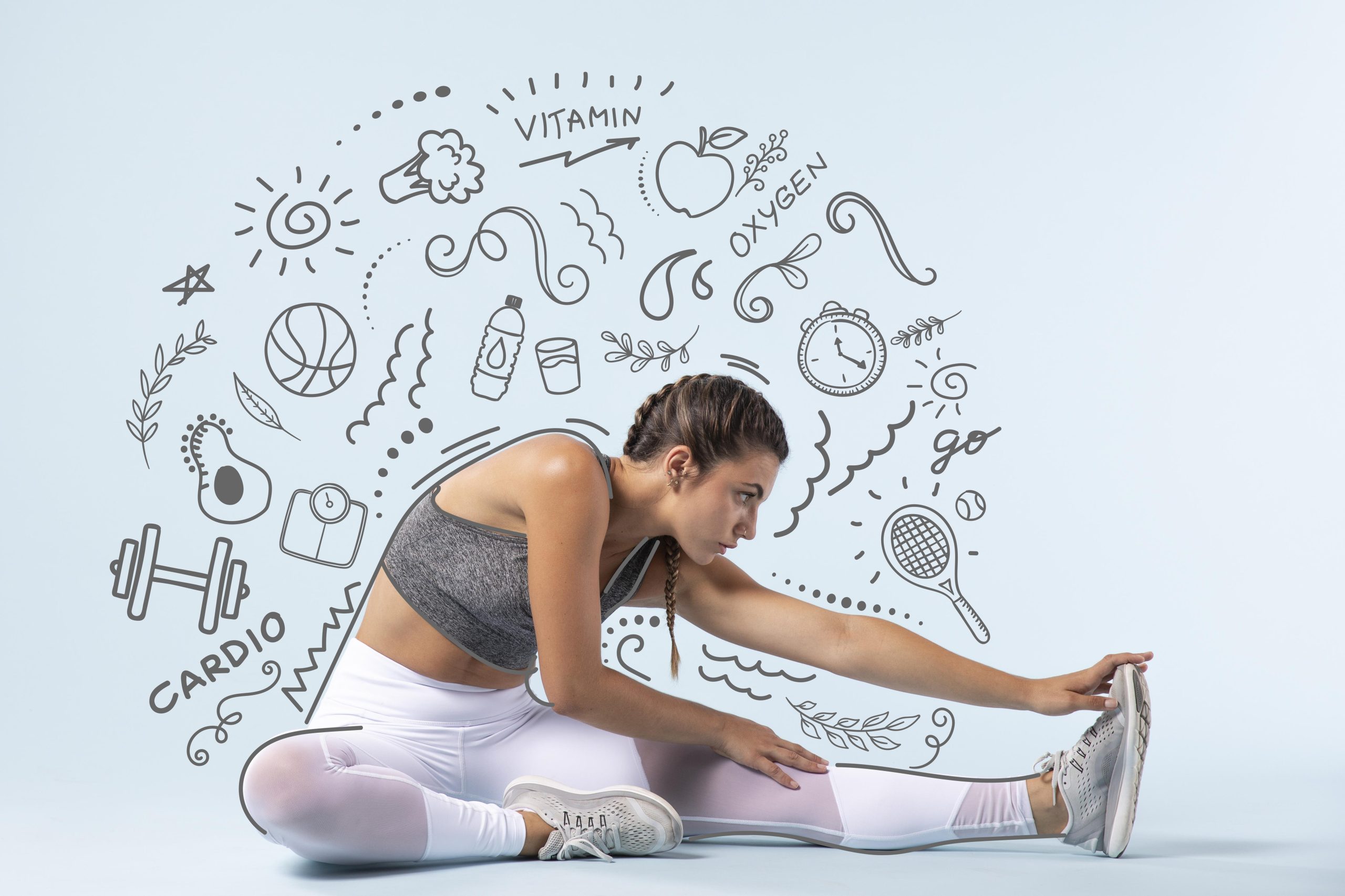When it comes to improving your fitness and performance, flexibility and mobility play crucial roles. Whether you’re lifting weights, running, or practicing yoga, having good mobility and flexibility can help reduce the risk of injury, enhance movement quality, and increase your overall performance. In this blog post, we’ll explore practical strategies to increase flexibility and mobility for better performance in exercise.
1. Understand the Difference Between Flexibility and Mobility
Before diving into how to improve flexibility and mobility, it’s important to understand the difference between the two.
- Flexibility refers to the ability of a muscle or group of muscles to lengthen passively through a range of motion. Stretching exercises primarily target flexibility.
- Mobility, on the other hand, is the ability to move a joint actively through its full range of motion, incorporating both flexibility and strength. Mobility exercises often involve controlled movements that work on joint function and overall muscle control.
Both flexibility and mobility are essential for achieving better performance in exercise, so it’s crucial to incorporate both into your training routine.
2. Dynamic Stretching Before Exercise
Dynamic stretching is one of the best ways to improve mobility and flexibility before a workout. These stretches are designed to engage your muscles and joints while warming up your body for more intense movements. Unlike static stretches (where you hold a stretch for an extended period), dynamic stretches involve moving your body through a full range of motion.
Examples of dynamic stretches include:
- Leg swings (front to back and side to side)
- Arm circles
- Lunges with a twist
- High knees
Dynamic stretches help improve joint mobility and prepare your muscles for the demands of exercise, allowing for better performance during your workout.
3. Incorporate Foam Rolling (Self-Myofascial Release)
Foam rolling is an excellent technique for improving both flexibility and mobility. It targets the fascia (the connective tissue around muscles) and helps release tension, improve blood flow, and reduce muscle tightness. Foam rolling can enhance flexibility by increasing the elasticity of the muscle tissues and by promoting better joint mobility.
Make foam rolling a part of your warm-up or cool-down routine, focusing on areas like your hamstrings, quads, calves, and upper back. Spend about 1-2 minutes on each muscle group, applying gentle pressure and allowing the muscle to release any tightness.
4. Static Stretching After Exercise
While dynamic stretching is great before exercise, static stretching is ideal for post-workout recovery. After your workout, your muscles are warm, which is the perfect time to work on increasing flexibility. Static stretching helps elongate the muscle fibers and can prevent stiffness, aiding in recovery.
Common static stretches include:
- Hamstring stretch
- Quadriceps stretch
- Chest and shoulder stretch
- Hip flexor stretch
Hold each stretch for 20-30 seconds to improve flexibility over time. Make sure to breathe deeply and relax into each stretch.
5. Yoga and Pilates for Flexibility and Mobility
Yoga and Pilates are two popular practices that focus on improving flexibility, mobility, and overall strength. Both of these practices incorporate stretches and movements that target multiple muscle groups and enhance joint mobility.
- Yoga combines breathing techniques with various poses, helping improve both flexibility and mobility.
- Pilates focuses on strengthening the core while improving flexibility and mobility through controlled movements.
Adding yoga or Pilates sessions to your routine can significantly boost your flexibility and mobility, contributing to better performance in exercise.
6. Focus on Mobility Drills for Key Joints
Certain joints, such as the hips, shoulders, and ankles, play a major role in overall mobility and exercise performance. To enhance your mobility in these areas, incorporate specific mobility drills into your routine.
Examples of mobility drills include:
- Hip Circles: Helps improve hip joint flexibility and mobility.
- Ankle Rolls: Improve ankle mobility, which is crucial for activities like running and jumping.
- Shoulder Dislocations: Improves shoulder mobility and flexibility, essential for upper body strength exercises.
Focusing on these key areas will ensure that your body moves more efficiently and reduces the likelihood of injury during exercise.
7. Stay Consistent
Improving flexibility and mobility doesn’t happen overnight. It requires consistent effort and dedication. Aim to incorporate flexibility and mobility exercises into your routine at least 3-4 times a week. Over time, you will notice improvements in your range of motion and overall performance.
8. Listen to Your Body
Finally, always listen to your body. Avoid pushing yourself too hard, as overstretching or overexerting yourself can lead to injuries. Gradually increase the intensity and duration of your flexibility and mobility exercises to allow your body to adapt safely.
Conclusion
Increasing flexibility and mobility is key to improving your performance in exercise. By incorporating dynamic stretching, foam rolling, static stretching, yoga, and mobility drills into your fitness routine, you’ll notice enhanced range of motion, reduced risk of injury, and better overall performance. Remember, consistency is key, and the more dedicated you are, the more noticeable the benefits will be.
Start implementing these strategies today to achieve better performance in exercise, and unlock your full physical potential!


